With the surge of earphones sporting a replaceable cable, a number of manufacturers saw the opportunity to market replacement cables and fitted this niche with products ranging from very low cost to premium. As I don’t believe in audible changes duento cables, I guess the reasons to want a new cable are basically reduced to aesthetics, build quality and materials. The Yinyoo brown 8-core silver plated cable has a good combination of all three aspects while keeping the price in check, which makes it a suitable replacement for stock cables.
Disclaimer: I got this cable directly from AK Audio who asked me to review it. It goes for $26 on their AliExpress store.
TL;DR: recap
| Pros |
Cons |
| Well-assembled with good materials
Seemingly durable and resistant Affordably priced |
Not found at this price |
Rating: 8/10
Packaging & Accessories
The Yinyoo brown 8-core cable comes in a simple plastic bag with no other accessory or packaging.
Design & Build
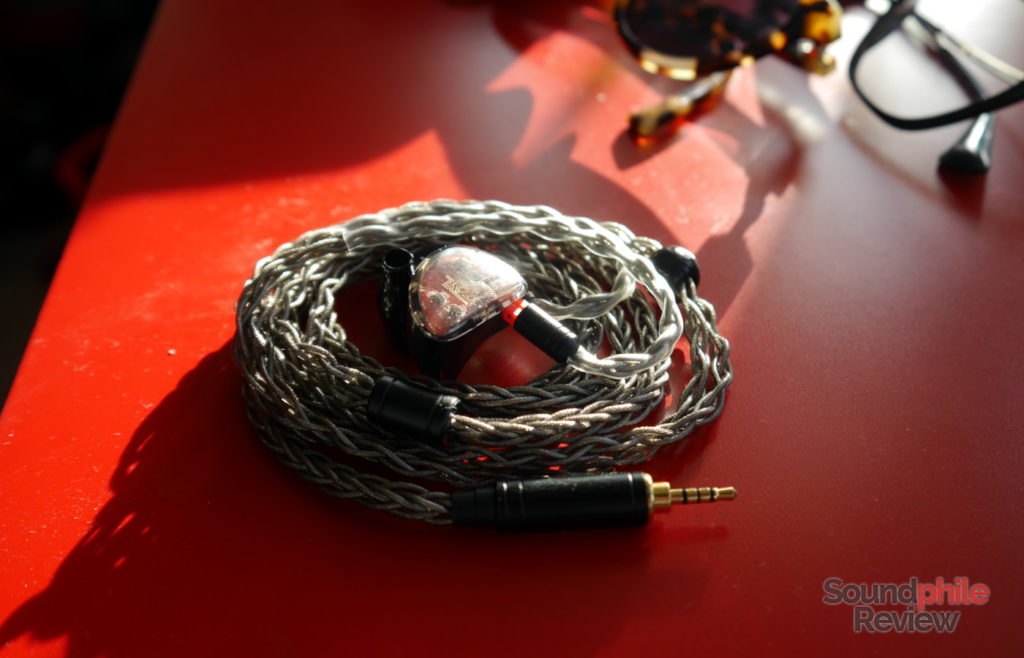
Despite what the name implies, the Yinyoo 8-core brown silver plated cable is not brown. One could wonder why they chose this name, but colour is an opinion after all, at least to a certain degree, isn’t it? It is in fact dark silver, which has some brown/gold notes in it, but it is a far cry from being truly brown.
One thing that is in fact accurate about the name is the reference to the number of cores. There are 8 braided cores, that split in two groups of four. Each core is individually sleeved in plastic – it’s this plastic that is coloured and gives the cable its silvery-brown look. Contrary to most of the plastic I’ve seen used as sleeve, in this case it is rough and it almost seems like it is embroidered itself.
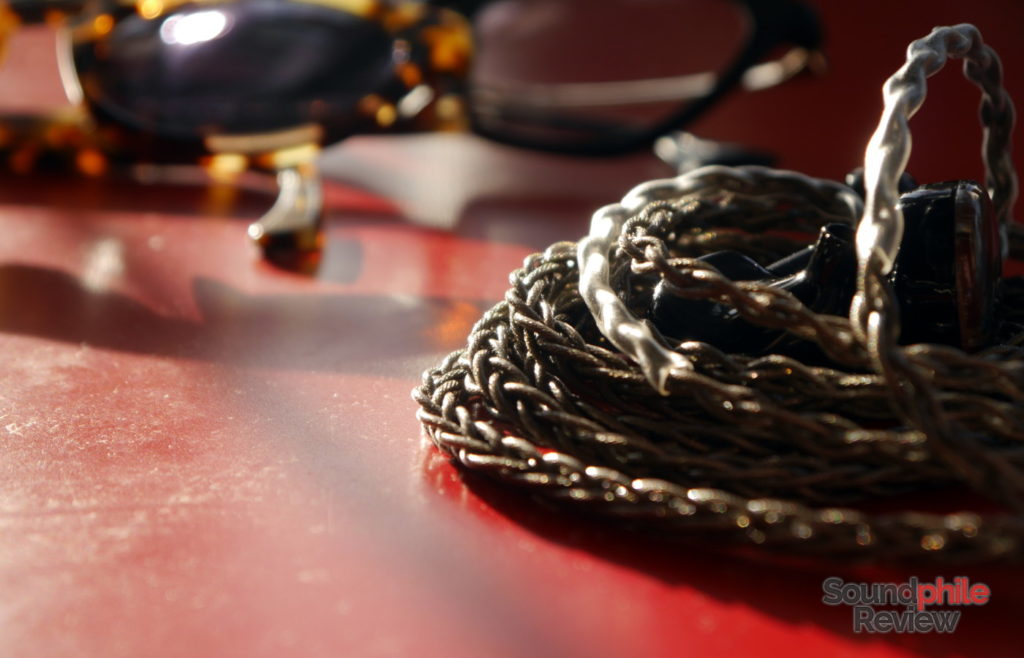
At one end of the cable is a jack (a 2.5 mm TRRS jack in this case, though 3.5 mm TRS and TRRS and 4.4 mm are also available) protected by an aluminium cylinder also sporting a bit of soft plastic as a strain relief. At the other end are the two connectors that go in the earpieces: they can be either 2 pins or MMCX (in my case it is the former standard), and they are preceded by two small aluminium cylinders and pre-moulded plastic that is shaped after the pinnae. Right in the middle is the Y-split, also made of aluminium, accompanied by a chin slider made with a black plastic sphere – effective, despite the looks.
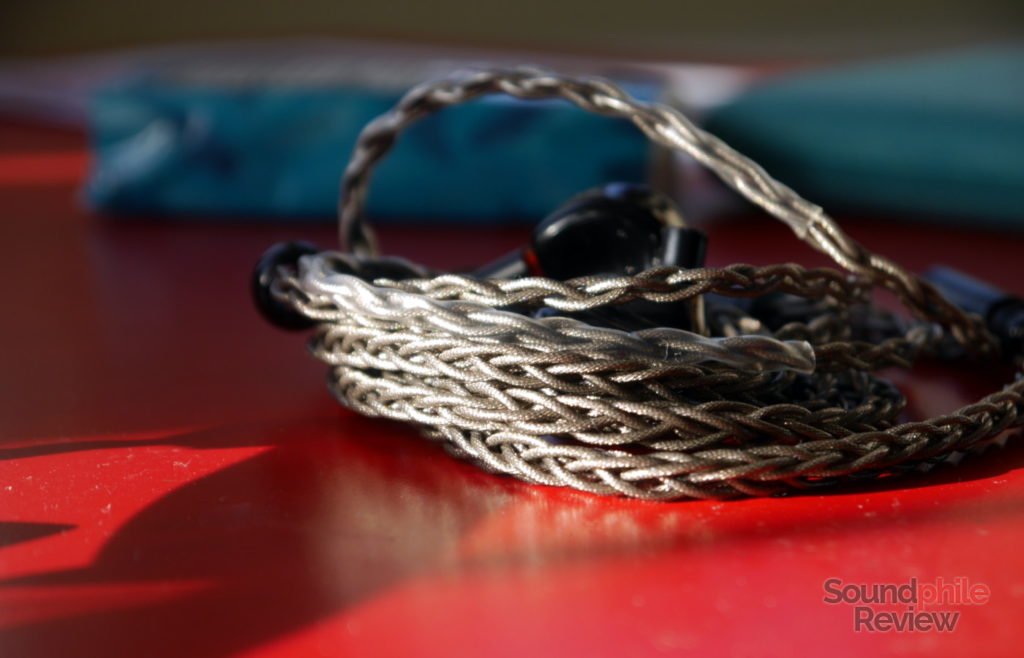
All in all the cable looks well built and decently durable. Its appearance does not leave any doubt on the affordable positioning of the cable, but it also is better than most stock cables in terms of appearing strong and resistant.
As the pre-moulded plastic makes the cable smooth and makes it adapt to the shape of the ears, comfort is very good and a serious upgrade over most stock cables in my opinion. Microphonics is also kept to a minimum, so one can walk around without hearing any constant thump.
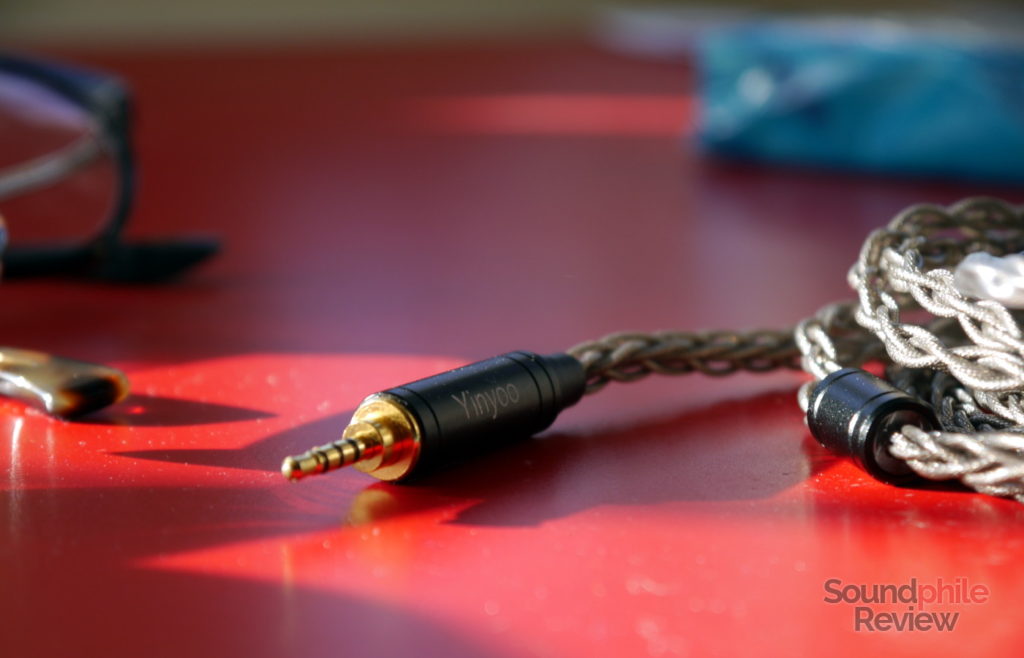
Sound
I tested the Yinyoo brown 8-core silver plated cable with a few different earphones, including the KZ AS10 (pictured above), KZ ZS4 and TRN V80.
My stance on cables is pretty clear – I can’t hear any difference 99.9% of the time, and if there are in fact differences then they’re really minor. As differences cannot be detected by measuring instruments, I won’t comment on the influence of cables on sound – to me, picking cables because of their sound is out of the question, so I won’t recommend any cable because of its supposed sound.
Final Thoughts
Finding great cables around $25 is now easy enough, thanks to Chinese manufacturers flooding the market with affordable products. Although you will probably not find any advantages in using those cables from an acoustic perspective, the build quality is most probably better than that of stock cables sold with earphones below $200.
That’s also true for the Yinyoo brown 8-core silver plated cable. I can’t find any significant flaw in it, at least not for the price. It therefore wins my recommendation: it is a good product at a good price.

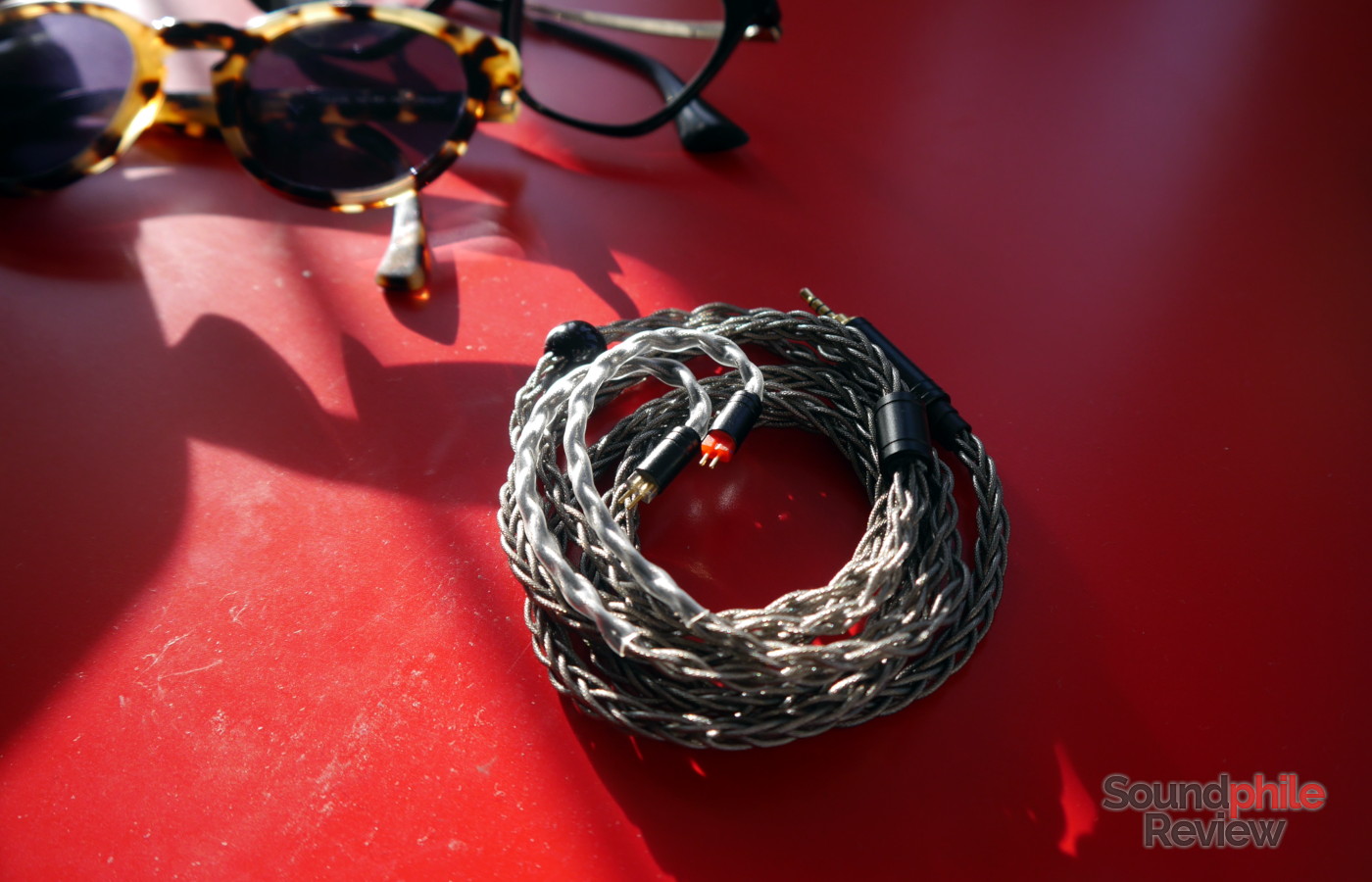


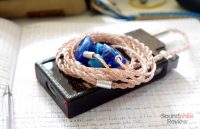
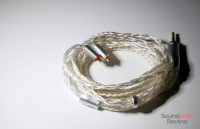
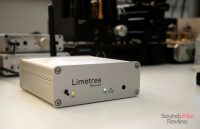
Why bother to review cables if you are already biased in believing they make no difference to the sound. One of the reasons people choose a cable is a hoped for audio upgrade, or at least that its not worse than the standard cable. To have a review on an audio website and not discuss the sound is strange indeed.
I’m not “already biased”, I can’t hear any difference. And measurements also tell me there is no difference, so they agree with my subjective impression.
Also, cables make a huge difference in how you approach your earphones: a good cable can completely change the way you wear earphones and therefore the way you listen to them. Personal audio is not just about sound, is about the whole experience – so I write cable reviews because I focus on other things that are just as important as sound.
Hi Riccardo, appreciate that you are honest in your reviews and report what you experience, but how then to understand the sometimes obcene prices some people pay for cables, it cannot all be just aesthetics and marketing hypnosis. I have experienced significant changes between different speaker cables but know little about headphone/IEM cables however would have expected some change in sound based on materials, construction and compatability. Maybe thats my bias.
Hi Andy,
I do understand your reasoning. My answer is simple: belief. There’s people paying obscene amounts of money for Ethernet and HDMI cables but, as a computer scientist, I can tell you that they make no difference by design. The point of HDMI is exactly that the cable either works or it doesn’t, so if it does you get the full performance and if it doesn’t you can actually see or hear it. The cable really does nothing more than delivering bits from point A to point B. Reading the specifications and studying a bit how this things work makes this really clear (I studied networking on the fantastic “Computer networking and the Internet” by Fred Halsall, that’s a highly recommended book even if a bit in-depth).
So if people are willing to spend hundreds or thousands on cables that make no difference by design, you can see how some may be willing to spend what I earn in one year for analogue cables.
The argument “if it costs so much it must be true” or the variation thereof “if people spend so much it must be true” is a logical fallacy; people spend obscene amounts of money on gambling and slot machines, yet this doesn’t mean that it grants money (nor that it is a sane thing to do). Another example is drugs – although many people that do cocaine or heroin say they’re happy, I don’t think they are as doing drugs definitely does not grant you happiness. The same applies to audio.
People just act based on their beliefs – let them do that. I don’t care at all about what other people do or think if I can’t confirm the facts myself. Thinking critically and never accepting things as they are presented is my way of living and I do that with audio, too, so if I can’t hear any difference I am not going to write that I do just because someone else writes that.
(By the way, when I do hear differences I write that: https://www.soundphilereview.com/reviews/venture-electronics-monk-plus-spc-review-1248/)
Hi!. I’ve been looking through your reviews and nowhere do you mention that these are 0.78mm pins while IEM such as the ZS10 mostly use 0.75mm pins. is it fine to use 0.78mm pins in the ZS10/Pro and other such IEM? Reading around I see that it can cause 0.75mm pins to not sit snugly
Hi!
Where did you read the pins are 0.78 mm? The manufacturer says the cable is made for KZ earphones such as the ZS10 (Pro), so my guess is that it would be okay using it with 0.75 mm earphones. Anyway, I personally have never had issues using 0.78 mm on 0.75 mm earphones and vice versa.
Thank you for the reply! I was looking at this product https://www.amazon.com/Newest-Yinyoo-Silver-Earphone-2pins/dp/B07TKJHC94/ref=sr_1_1?keywords=yinyoo+2pin+iem+cable&qid=1569525959&s=wireless&sr=1-1
and thus my question. similar cables also state 0.78mm
If you look at the connector, it’s different. It is a QDC connector, whereas this has a 2-pin connector. You wouldn’t be able to use a QDC connector on “normal” earphones with 2 pins, you can only use it with those with the protruding connector (e.g. Tripowin TP10 or KZ ZS10 Pro, but not the ZS10). So the cable you linked has nothing to do with this cable.
ooh… got it. Thank you for taking the time to explain! Really appreciated!
You’re very welcome!